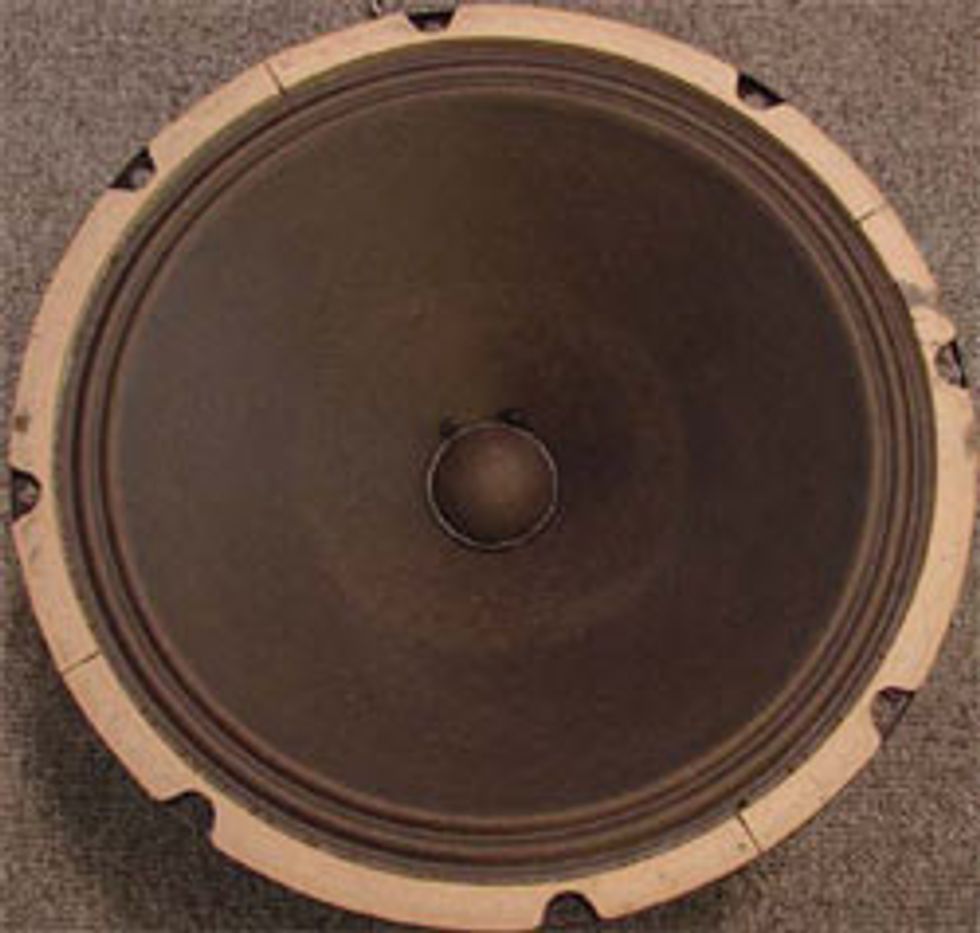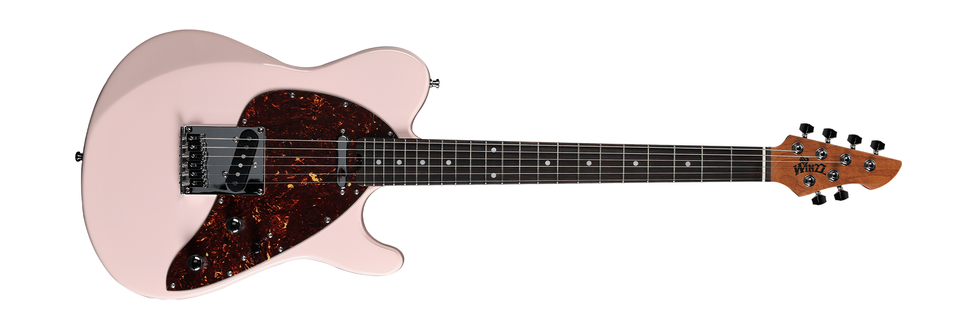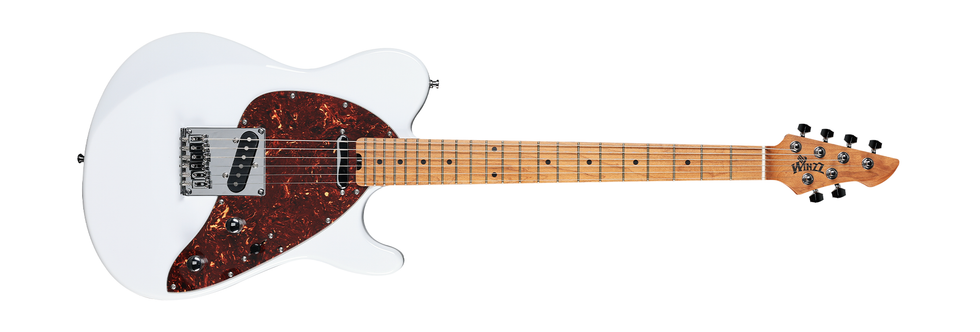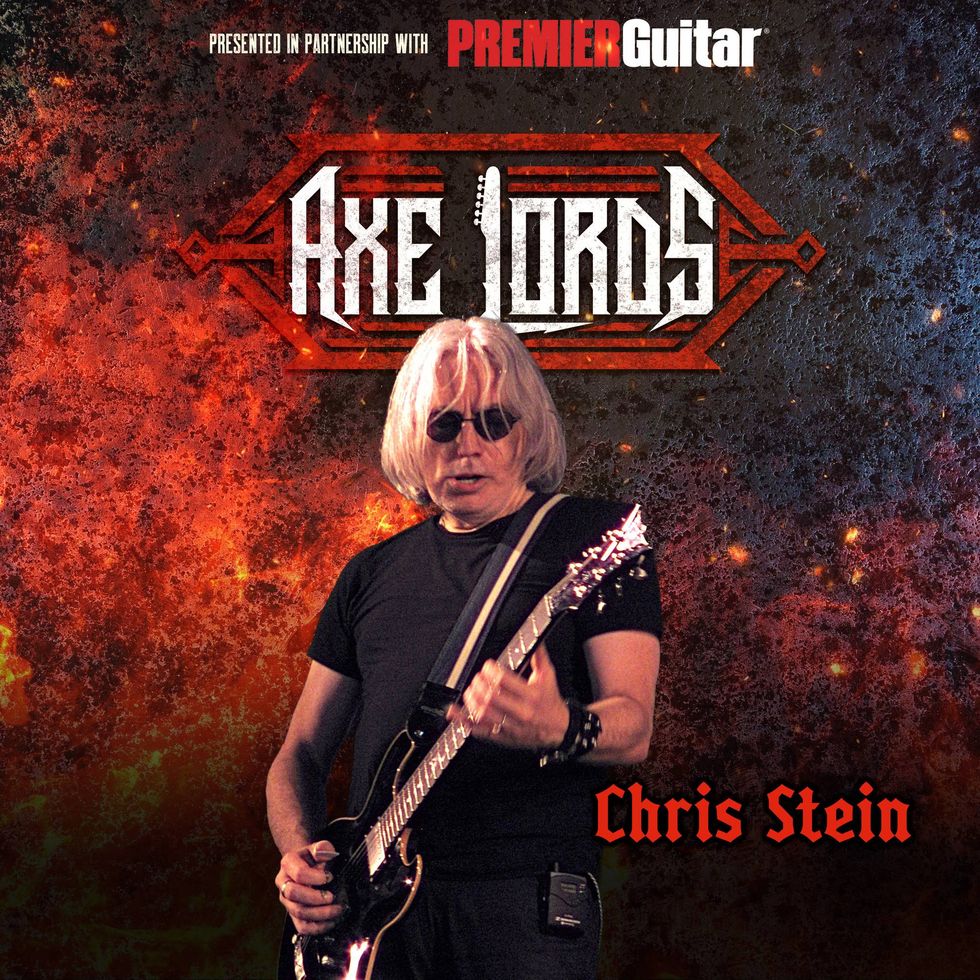How’s everybody doing? In the last couple of
installments we’ve looked at Britain’s contribution to the special sounds of classic rock.
Now I think it’s time to bring our historical
journey back around to where rock ‘n’ roll
began—right here in the good old USA! I’ve
been listening very carefully to the various
speakers being made today and comparing
them to the speakers made in the heyday of
amplifier making: the ‘50s and ‘60s. During
this particular era and into the early ‘70s
there were quite a few US speaker manufacturers around. Many of these speaker brands
possessed their own unique voices. However,
some of these manufacturers stopped making guitar speakers entirely, or making the
proper recone kits for those speakers that
would eventually need repair. The end result
was that reconed speakers didn’t sound (or
react to your touch) at all like they did
before. This was a huge bummer.
I will never forget a particular time in
my youth when I was at a jam session
where a saxophone player nonchalantly dropped a Shure SM58 micro-
phone down the bell of his horn. I was
horrified at the sound we heard emanating from my Altec Lansing 417-8C
loaded Fender Twin Reverb—CLANG!
And then suddenly, NOTHING...
Man, was I pissed! I was unable to utter the
smallest of sounds. That afternoon I called
the dealer where I had purchased the Altec
Lansing speakers, and was given bad news.
They were out of stock and discontinued,
never to be made again. After many frantic
calls to various Altec Lansing dealers in my
area, I found out that nobody had them in
stock. In the end, I was forced to replace
the Altec Lansing 417-8Cs with JBL E-120s.
Did they sound like the 417-8Cs? Nope, far
from it. The JBLs were much brighter and
would not distort like the Altecs did. If any
distortion was introduced, the JBLs sounded
wimpy, thin and lacked body by comparison.
Keep in mind, this type of speaker had a
much higher power rating than what our ears
knew as the classic Fender sound.
 1954 P12Q. Photo by Dean Farley. |
In recent times, we’ve been seeing a lot of amplifier companies claiming they can recreate that great “American sound,” but to my ears, these companies don’t have the right sounding speakers with their amplifiers. And this is one of those beyond- critical keys in creating the authenticity of that old wonderful tone. So, if you have an old original Fender amp hanging around that dates anywhere from the early ‘50s on up to the mid-‘60s that needs to come back home, sonically speaking, you’ll more than likely have a big problem getting it back “in the pocket.” I haven’t heard any 12-inch reissue speaker that sounds remotely like those old original American made Jensen speakers—until recently.
Enter Adam Palow and Tungsten Amplification of Grand Island, FL. Adam is one of the most finicky people I have ever met in the boutique amplifier business, and he has succeeded in nailing this sound. Adam and I did an interesting blindfold test. He took two brand new open-back pine wood 1x12” Tungsten enclosures, one loaded with an original 1954 Jensen P12Q and the other loaded with one of his brand new Tungsten T12Q Weber speakers (made by Weber to Tungsten specs)—straight out of the box with no break in period. When we settled down to do our testing, Adam asked me if I could pick out the cabinet that had the 1954 model P12Q in it. I listened very carefully for a few moments as he switched back and forth between the two enclosures directly in front of us. When I pointed to the cabinet which I thought contained the real deal, I was informed that it was sitting in the other cabinet! Wow...
I was completely stunned, because at best the difference between the two speakers was so minute it would have been harder than splitting hairs to tell the two apart. The treble was voiced correctly with the midrange slightly scooped, and the bass was exactly right. Please consider this a public service announcement for those who own old amps that need to be restored to their original glory. If you feel you’re one of the players with this dilemma, you can get fixed up! See you next month.
Dean Farley
Dean is the chief designer of "Snake Oil Brand Strings" (sobstrings.net) and has had a profound influence on the trends in the strings of today.












![Rig Rundown: Russian Circles’ Mike Sullivan [2025]](https://www.premierguitar.com/media-library/youtube.jpg?id=62303631&width=1245&height=700&quality=70&coordinates=0%2C0%2C0%2C0)








